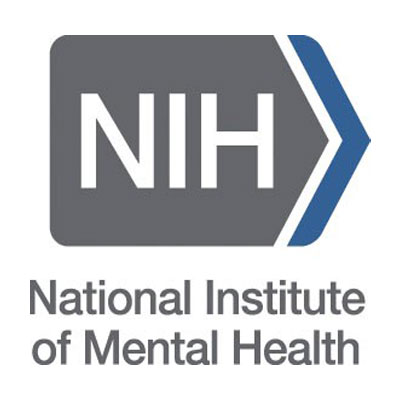
Generalized Anxiety Disorder (GAD)
What Is Generalized Anxiety Disorder?
The most obvious part of GAD to someone who has it is the constant worry. All of us worry at times, or have some area in our lives that we’re especially worried about. We might worry about money, especially if we suffer a financial setback or lose our job. Or we may worry about our children when they get sick.
With GAD, the worry can be about anything and happens all the time. Someone with GAD is likely to say, “I’m always worrying about something.” As soon as one concern is resolved, another takes its place. It’s relentless.
Someone once told me that having GAD is like feeling as though it’s college finals week all the time: Every decision and every task is fraught with worry.
In addition to the excessive and uncontrollable worry, GAD includes symptoms like feeling tense and edgy, having trouble concentrating and a hard time sleeping, and being irritable. Symptoms of GAD have to be present for months, and usually last for years. People I’ve treated with GAD often describe constant worrying that goes back as far as they can recall, even in elementary school.
[Get my free e-guide, “10 Ways to Manage Stress and Anxiety Every Day“]
Why Do We Worry?
When we care about some event in the future and the outcome of that event is uncertain, it leads to a state of tension. Worry can be thought of as a behavior that is intended to reduce that state of tension by thinking through possible bad outcomes and how to prevent them. Unfortunately, as you may well know, it’s generally not successful in reducing tension, and only leads to more anxiety.
Let’s consider an example. If I’m catching a flight, I want to get to the airport on time. There are many factors that affect whether I make my flight, and only some of them are in my control. I can decide when to call a cab, what time to ask the cab to be at my house, and whether I check bags or not. I don’t control when the cab actually arrives at my house, what traffic will be like on the way to the airport, how quickly the line will move to check my luggage, when the shuttle to my terminal arrives and how long it takes, how long the line is for security, how efficiently the TSA screeners move the passengers through the line, whether there is a problem with the computer system that slows the process, and so forth. In short, most of the factors are out of my control.
An uncertain outcome that’s mostly not in my control is fertile ground for GAD. I’m likely to worry about whether I told the cab driver the right time, whether there will be an accident, how busy security will be, and so forth. All my worrying is an effort to make sure nothing bad happens. There’s a good chance we’ll even believe that it’s good to worry:
- “At least if I think of things that could go wrong, I’m never blindsided.”
- “Worrying means I care.”
- “Worrying helps me avoid making mistakes.”
- “If I didn’t worry, I wouldn’t be motivated.”
[5 Reasons We Worry, and 5 Ways to Worry Less on Psychology Today blog]
When what we’re worried about doesn’t happen, we’re actually rewarded for worrying. How does that work? Let’s stick with the plane example, and imagine I’m worried about the plane crashing. I worry the whole flight, carefully monitoring the sounds the plane is making and checking out the crew to see if they look concerned every time I think something may be wrong. When the plane lands safely, my mind is going to feel an immense sense of relief and is going to encode anything I did on the plane as playing a causal role in my safe arrival. The implicit lesson is going to be: Good thing I worried. As a result, I’m going to be all the more likely to worry the next time I fly.
What Is CBT for GAD?
Because GAD by definition is so pervasive, it helps to have multiple tools to treat it. CBT treatment can include:
- Developing ways to calm the nervous system
- Questioning beliefs about how useful worry is
- Learning to embrace uncertainty
- Practicing being in the present
- Facing our deepest fears
Let’s examine each of these approaches.
Calming the Nervous System
When we’re constantly worried and on edge, our nervous systems are on high alert all the time. It can help to have ways to quiet our minds and bodies and find more of a sense of ease. There are multiple ways we can calm ourselves, such as guided muscle relaxation, meditation, and exercise. What works for one person may not work for another; the most important thing is to find what works for you.
Questioning Beliefs About Worry
As discussed above, we often believe—at least implicitly—that there are advantages to worrying. It’s important to examine your thoughts about worry to see if you have any beliefs about it that fuel the worry. What do you imagine would happen if you let go of the worry? Do you think the outcome would be worse? That you’d be caught off-guard if things turned out badly? That you’d stop caring about the outcome? Once we’ve identified any beliefs that support worrying, we can carefully examine if the beliefs are valid. If not, we can work toward intentionally letting go of our worries.
Embracing Uncertainty
Most of the things we care about in life involve uncertainty. We can’t be absolutely sure we’ll do well in school, or that people will like us, or that we’ll always have our health, or that we’ll have a happy marriage. And yet we don’t have to let this uncertainty stop us from living the lives we want. Beyond simply tolerating uncertainty, we can embrace it as an inherent part of really living. We spend so much time trying to eliminate uncertainty, and so it takes considerable practice to begin to embrace it.
Living in the Present
In my own practice, training in mindfulness is almost always part of the approach to dealing with GAD. The attitude that underlies mindful presence is helpful on many levels in managing overwhelming worries. Mindfulness emphasizes focusing our mental energy on the present, with openness and acceptance. Since worry is by definition about the future, training the attention to come back to the present is a powerful tool in treatment for GAD. We can practice focusing our attention on the present in everyday activities like taking a shower or walking, as well as in more formal practices like meditation or yoga.
[Why Your Time in the Shower Is Vital to the Rest of Your Day on Psychology Today blog]
[Why You Don’t Want to Meditate—and 5 Ways to Make It Easier on Psychology Today blog]
Facing Our Fears
Worry is intended to protect us from what we fear, and yet it can lead to spending most of our energy on things that never happen. When we face our fears head-on, they tend to diminish. Rather than worrying uselessly, we can practice deliberately imagining our feared outcome. At first it will probably feel quite frightening. With repeated practice, our fears become less gripping and we can confront them with greater equanimity.
Additional Resources
GAD Information from ADAA
The Anxiety and Depression Association of America provides information about GAD; has a “Find Help” section with a “Find a Therapist” directory, links to support groups, information on treatment by phone, Internet, or email, a Mental Health Apps page, and a list of self-help books and other resources; and information for professionals.


